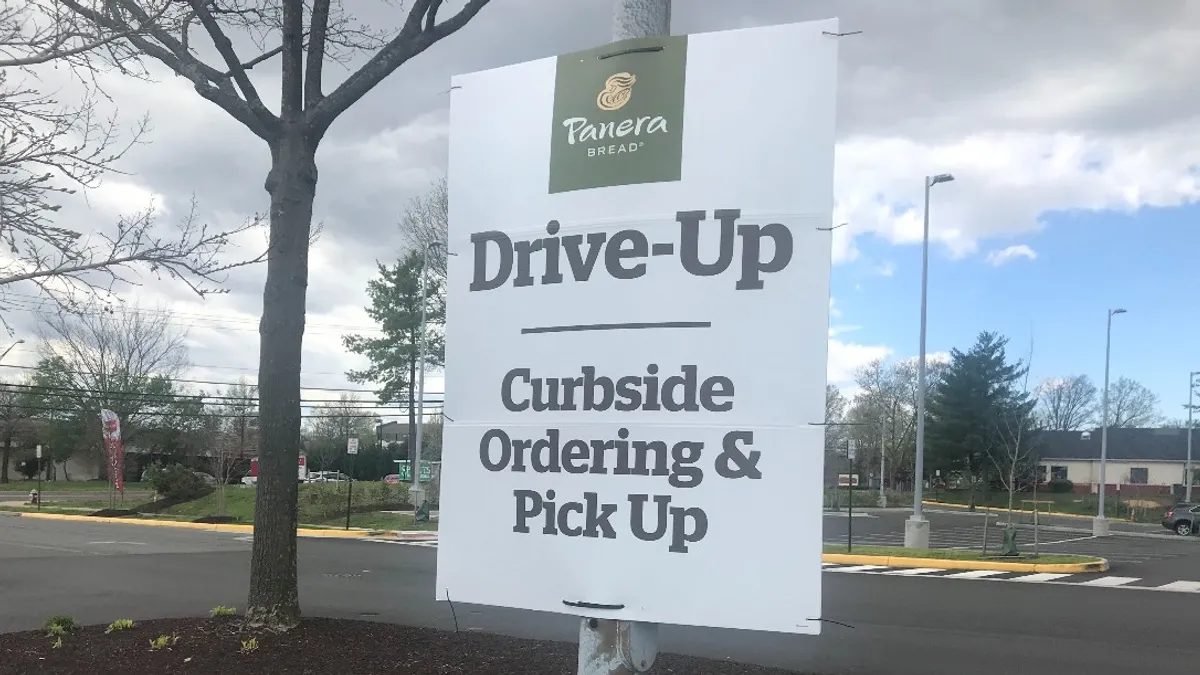Dive Brief:
- A new report from Rakuten Ready reveals the QSR segment has slower curbside pickup service than casual dining. Starbucks and Pizza Hut had the best curbside speed-of-service times in QSR at just under three minutes and around three and a half minutes, respectively, and also had high customer satisfaction scores. McDonald's curbside channel is 14% faster than last year, while Chick-fil-A's wait times have doubled year-over-year to an average curbside wait time of over nine minutes.
- In the casual dining segment, Olive Garden had the fastest curbside wait time at around two minutes, while Panera and Applebee's also generated strong performances on both speed and overall customer satisfaction.
- It's surprising that casual dining concepts execute faster curbside experiences than their QSR counterparts, since the shift to off-premise during the pandemic has been challenging for so many sit-down chains. But Olive Garden, Applebee's and Panera benefit from large real estate footprints that can designate parking spots for curbside, as well as strong technology infrastructure for to-go business — two of curbside pickup's biggest operational complexities.
Dive Insight:
QSRs have long been considered the fastest restaurant experience, but growing consumer interest in curbside pickup is leveling the playing field for fast casual and casual chains. Many of the heavyweights in this space were well positioned for the pandemic-fueled boom in this channel. Olive Garden was focusing on its off-premise business well before COVID-19, while Applebee's is a pioneer in takeout with its Carside To-Go service, which launched in 2005. Panera's Rapid Pick-up business was put into place about five years ago.
Conversely, quick-service restaurants haven't had to focus on the curbside pickup channel as much because of the ubiquitous presence of drive-thrus in the segment. However, that doesn't mean curbside hasn't increasingly become a priority for brands across the entire industry during the COVID-19 crisis. A recent report from SeeLevel HX and Bluedot shows that 40% of consumers are using curbside pickup more often than they did prior to the pandemic, as it offers a new access point while dine-in remains limited.
As that demand increases, a number of chains have either promoted the channel or have added it from scratch over the past few months. Panera, for example, launched Panera Curbside in May. CEO Niren Chaudhary told Forbes that it took seven days to put the channel in place and that it already tracks at about 5% of the chain’s sales. Chaudhary expects the channel to continue to gain momentum, as it offers a cheaper alternative for consumers than delivery.
Dunkin' is another company that launched new curbside capabilities during the pandemic. During the company's Q2 call, CEO Dave Hoffman said there are now more than 1,400 Dunkin' locations offering curbside. Shake Shack also recently launched curbside pickup within its app and, as CEO Randy Garutti said during the companys Q2 call, the "hope is that we create access in places where we may not have had access before."
The channel's appeal isn't likely to fade in a post-pandemic environment, as it provides wins for both the consumer and the operator, especially as operators deploy more technology to improve and streamline the experience. During Darden's Q1 call in late September, for example, CEO Gene Lee said the company is working on adding geofencing to make the curbside experience less manual for customers. Having curbside will also make the dine-in experience better since there will be fewer customers going inside the restaurant to pick up their to-go orders.









